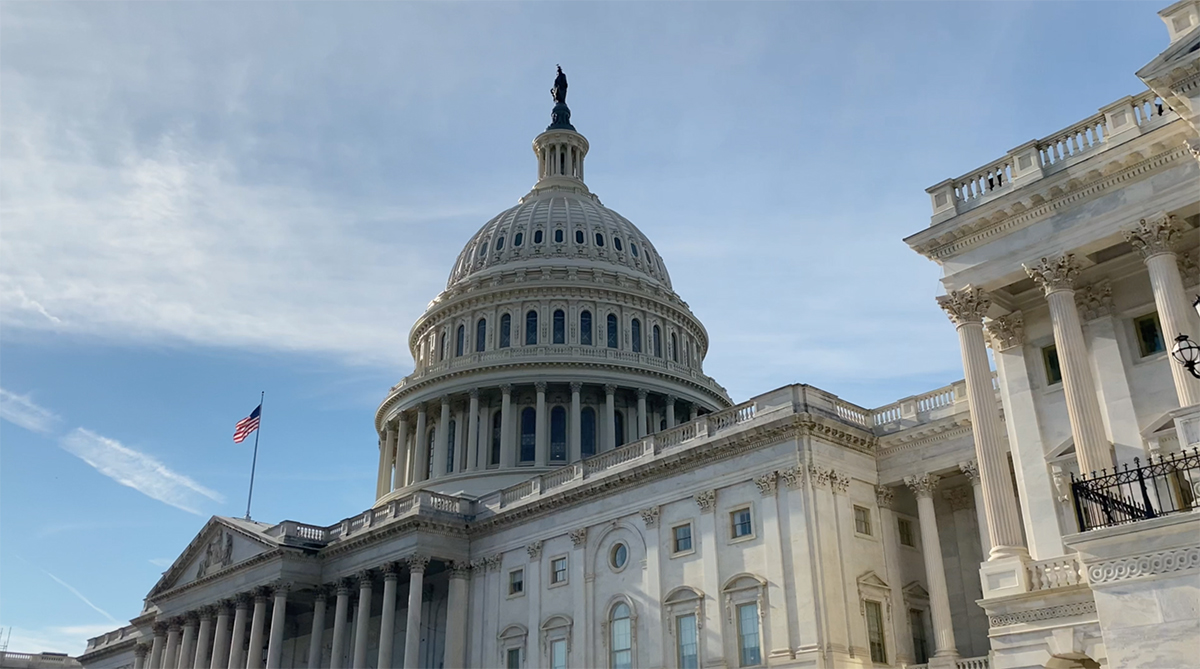Lessons From The 2009 American Recovery And Reinvestment Act For The American Jobs And Infrastructure Plan
Lessons From The 2009 American Recovery And Reinvestment Act For The American Jobs And Infrastructure Plan

In a Washington equivalent of flea-market haggling, the White House and Congress are in the process of bipartisan negotiations. The President’s opening gambit of $2.3 trillion was recently countered by a Republican offer at a quarter of the cost at $568 billion.
Price tag aside, the main issues of contention are about where to allocate the spending, and who will ultimately foot the bill.
Both sides regard the question of why should the government intervene in the first place as moot. Perhaps because a recent Gallup poll reveals the majority of Americans support the idea that big problems require big solutions by big government.
For a nation battered by job losses due to government instituted lockdowns during the pandemic, the bill is being sold as a necessary government antidote for job creation and revival and a reimagination of the economy.
Armed with the unchallenged notion that leaders in Washington must and should step in and save the day, the question of how they will do so seems far less important than their noble intention to serve the public interest.
History offers a cautionary warning, as recently as the 2009 American Recovery and Reinvestment Act (ARRA).
With a price tag of $787 billion, ARRA was the largest pre-COVID stimulus package aimed at job creation and infrastructure investment in response to the Great Recession. To speed up spending and provide localized access, ARRA funds were disbursed from the federal to state and local levels to provide private businesses with grants for infrastructure investment and job growth.
The effects of ARRA stimulus were examined in a Congressional Research Service (CRS) report, and research by economists Joonkyu Choi at the Federal Reserve Board of Governors, Veronika Penciakova at the Federal Reserve Bank of Atlanta, and Felipe Saffie at University of Virginia.
Both studies help shed light on the process through which ARRA stimulus funds were distributed. Their findings uncover two important lessons on how and why big government stimulus fails to yield big solutions to big problems.
Political leaders award more stimulus dollars to firms that contribute to their campaigns
The average size of an ARRA grant was over half a million dollars, and firms that won grants were awarded 1.8 grants on average. Choi, Penciakova and Saffie focused on grants awarded to firms contributing to candidates that ran for offices in close elections where the outcome was difficult to predict, so they could establish how political connections cause award grants and job creation.
Firms who made campaign contributions were the primary beneficiaries of the ARRA grants. They were 38% more likely to receive grants relative to similar firms in the same region that lacked such connections, and their grant amounts were 10 percentage points larger.
The lesson for cronies from the study is clear: not only does it pay to lobby for political favors as a rule, stimulus packages such as ARRA can translate to a windfall gain as much as $2.6 dollars for every dollar of political contribution.
For others, it is a sobering reminder that political leaders are not disinterestedly objective when determining “public interest.” They are more likely to serve personal interests by rewarding firms who contributed to their own campaigns.
It is perhaps unsurprising, then, that lawmakers in both parties are lining up their pet projects for a slice of that $2.3 trillion pie. As new Transportation Secretary Pete Buttigieg noted, “my phone is blowing up…there’s a ton of interest from Congress.”
Job growth from stimulus funding is modest, and even lower when grants go to campaign contributors
Did big government deliver on the noble intention of big solutions in terms of the creation of new jobs?
Not really, the studies show, and at high cost.
Choi, Penciakova and Saffie estimate that between February 2009 and December 2010, only 27.2 jobs were created or saved on average for every $1 million of taxpayer money, translating to a cost-per-job of almost $37,000.
Moreover, a 9 percent increase in the share of funds allocated to politically connected firms resulted in a 26 percent reduction in the job multiplier, translating to 20.1 jobs for every $1 million spent and a cost-per-job of almost $50,000. Political leaders favoring their campaign contributors thus cost an additional $13,000 per job.
The jobs were short-term too. The CRS report noted modest employment effects from infrastructure spending. Sustained increase in infrastructure jobs post-recession did not begin again until 2015, and the trends belie that the stimulus funding was the cause.
With “no agreed-upon meaning of ‘infrastructure’,” most funds were deployed in short-term “shovel-ready” projects with limited long term benefits. The report attributes this to public agencies that were “inexperienced at administering large amounts of grant funds.”
A lack of accountability is another reason. Local political leaders had to certify that ARRA funds would not be used instead of their planned expenditures in infrastructure. But 81 cents of each ARRA dollar were used to directly substitute for planned funding, because “maintenance-of-effort requirements” were difficult to enforce.
The grim lesson here follows from a logical principle. Using other people’s money with little worry of consequence provides scant incentive to achieve intended goals, or be cost effective. Economists deem this a moral hazard.
Fast forward to today, the White House $2.3 trillion plan redefines infrastructure to be all-encompassing. Additionally, President Biden claims “independent analysis shows that if we pass the plan, the economy will create 19 million jobs.” Using these numbers at face value, the cost-per-job is a staggering $121,000, more than three times the $37,000 cost-per-job computed above for ARRA.
Fact-checking on the independent analysis, the 19 million job growth number includes a natural growth estimate for the economy creating 15.6 million through private-sector efforts, and with no new policies in effect. The adjustment implies the proposed plan’s projected job creation to only be 2.7 million, and a cost-per-job of $850,000.
Taken together, the lessons from ARRA are bleak.
Suspicious of market coordination among private individuals to create win-win solutions, a battered nation seems to be seeking political panacea in an economic realm. But the likely outcome of the current political horse-trading is that both parties will heed the axiom of never letting a good crisis go to waste.
By diverting focus on where to allocate the spending, and who will ultimately foot the bill, political leaders will sidestep the fundamental questions on why they should intervene, and how they will likely do so.
Washington deal-making will once again further personal interests of the political leaders and their cronies, in the name of the public interest.
All for a very hefty price tag, to be paid with other people’s money.
Originally published in Forbes on May 5, 2021




